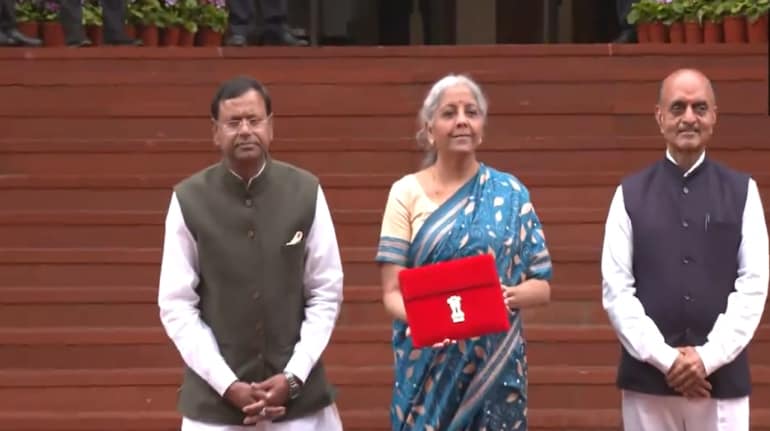
To be sure, green shoots are visible in select sectors, such as those sailing the rising tide of global exports, or those less affected by pandemic-driven restrictions and social-distancing norms.
The imminent statistical surge in growth, therefore, needs to be looked at in perspective.
Data shows that the Index of Industrial Production (IIP), automobile sales, exports, fuel consumption, core imports, and railway freight cargo have been growing in double-digits so far this fiscal, indicating a sharp rebound in growth.
First-quarter GDP data, due Tuesday, is also likely to show double-digit growth. That will mark the fastest growth the Indian economy has seen in any quarter to date.
A pound of salt would be par for the course: these on-year numbers are affected by the significant low-base effect of last fiscal.
So how should one look at the incoming GDP data?
One way is to focus on its influencers.
First is the low base over which growth gets computed. For example, GDP had contracted 24.4% in the June 2020 quarter after a near-halt to all economic activity following the “world’s most stringent” lockdown. So this very low base will give a big statistical lift to any on-fiscal comparison.
We estimate the June 2021 quarter GDP growth to come in at ~19% on-year.
Will that be enough to erase the hard losses borne by the economy?
Discounting the base effect and seasonality, two key findings emerge.
One is that the recovery, which was strengthening, stalled in the June 2021 quarter with the adjusted GDP showing a 6% decline sequentially – or over the March 2021 quarter.
And second is that the economy decelerated below the pre-pandemic level (that is, March 2020) as the second wave intensified.
To be sure, some upside to our 19% growth forecast is possible because several of the underlying indicators that the National Statistical Office (NSO) uses to estimate GDP have reported unusually high on-year growth rates.
For instance, other than electricity, all the other IIP indicators (mining, manufacturing, and metallic minerals) considered by the NSO for estimation have seen 27-45% growth during the quarter. Yet, growth will remain below the pre-pandemic ‘level’.
Second, economic activity was also uneven in the June 2021 quarter. That’s because, as the second wave peaked with alarmingly high infection rates, states re-imposed lockdowns in varying ways.
High-frequency indicators suggest higher resilience in the industrial sector compared with services, which bore the brunt of lockdowns. During the first wave, too, the industry was relatively less hurt because of better adaptability, fewer curbs versus services, and uptick in exports.
In the rural areas, while the pandemic spread rapidly, policy support to non-agricultural incomes was less compared with last fiscal. But the bumper rabi harvest would have cushioned agriculture incomes.
Expect this uneven pattern of growth to continue for a while.
Third, booming global trade has been a saviour. Across most segments, goods exports surged during the June 2021 quarter. Overall, exports have recovered to 18% above the levels seen two years back (June 2019 quarter). Services trade, though, has been slow to recover, continuing at levels still below the June 2019 quarter. Nevertheless, trade is expected to remain supportive for a few quarters more given the strength of the global economic uptick.
Overall, the Indian economy is expected to surpass pre-pandemic levels around the second quarter of this fiscal.
A broad-basing of this recovery will happen over time as business and consumer sentiment improves, the high-tide of global trade lifts many a boat, and most of the population is vaccinated.
As for the pandemic, though daily cases at the all-India level have stayed low, there are pockets of steeply rising affliction that threaten a return of precautionary, stringent curbs.
So until vaccination coverage increases significantly, restrictions in some form or the other are expected to continue. Consumer and business sentiment will also, therefore, remain subdued.
The good part is, the pace of vaccinations has improved significantly in recent weeks. However, coverage remains low with just ~10% of the population fully vaccinated and ~35% partially.
In comparison, accelerating vaccination rates in the United States – where more than half of the population is fully vaccinated – have allowed the opening up of sectors hardest hit by pandemic-related social distancing norms.
Overall this fiscal, India would be among the fastest growing large economies, with a GDP print of 9.5%. On the face of it, a notable feat, but shorn of the underlying low-base effect, the economy will be only 1.5% above the pre-pandemic level seen in fiscal 2020.
What could derail the clawback from here? A stronger-than-anticipated third wave of the pandemic, and slower-than-expected pace of vaccination are the key risks.
Given the uncertain nature of the pandemic, policymakers would do well to minutely monitor all incoming data before taking appropriate action.
Given the uncertainties, the underlying trends matter more than the headline number.
Watch the wheels closely, and keep directing policy grease towards the creaks.
(Dipti Deshpande is Principal Economist, CRISIL Ltd. Views are personal.)
View: Read past the statistical pop when looking at the massive surge in Q1 GDP growth - Economic Times
Read More

No comments:
Post a Comment